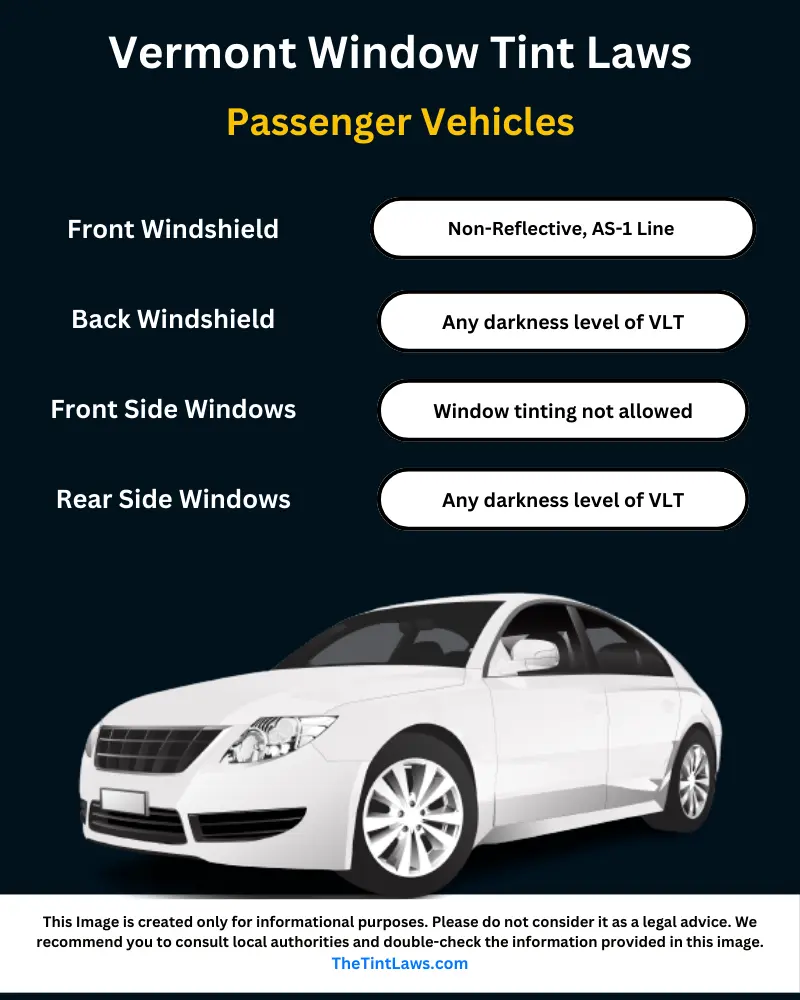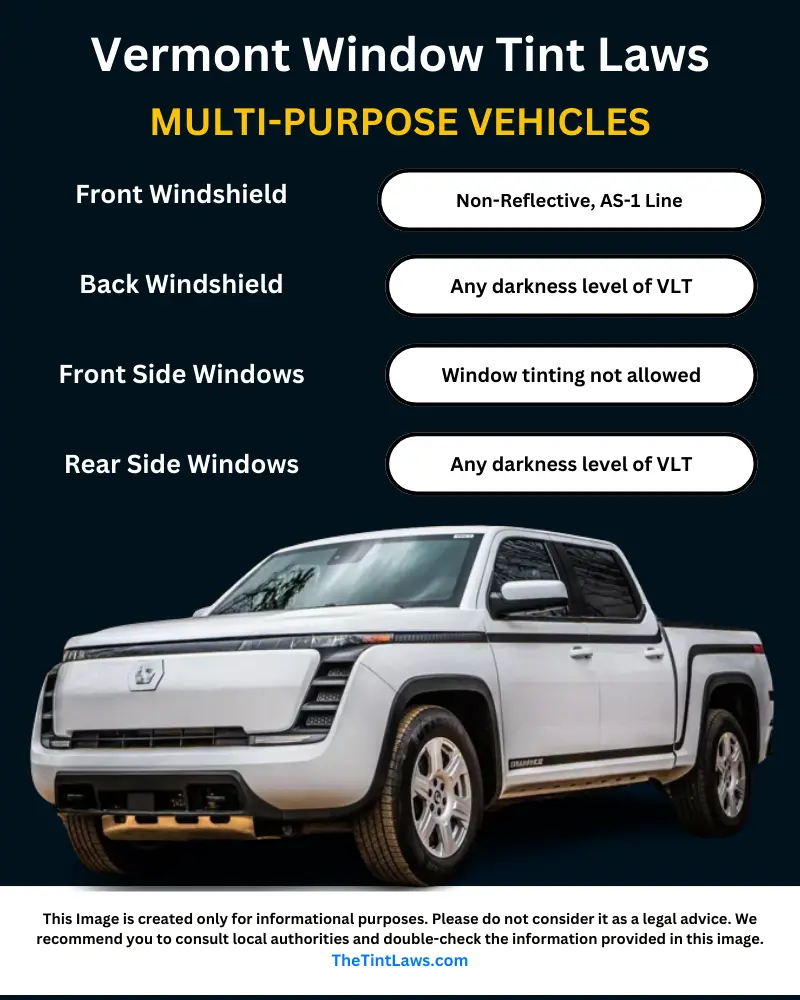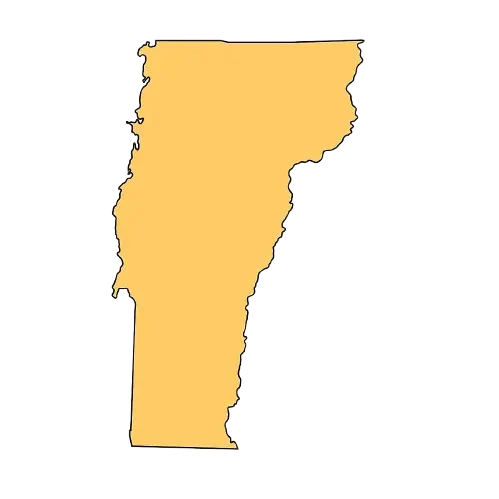Keeping your car cool and your belongings protected with window tint is a popular choice for Vermont drivers. But before you get your windows tinted, understanding the Vermont tint laws is crucial to avoid fines and ensure safe driving.
This guide will break down everything you need to know about VT tint laws.
Window tint laws in Vermont were enacted in 1984.
Legal tint darkness for sedans:
- Windshield: Only non-reflective tint should be above the manufacturer’s AS-1 line or top 5 inches.
- Front side windows: It is not allowed to tint the front side windows.
- Back Side windows: Any darkness level is permitted.
- Rear window: Any darkness level is permitted.

Legal tint darkness for SUV and Van:
- Windshield: Only non-reflective tint should be above the manufacturer’s AS-1 line or top 5 inches.
- Front side windows: It is not allowed to tint the front side windows.
- Back Side windows: Any darkness level is permitted.
- Rear window: Any darkness level is permitted.

Important Note: It’s crucial to remember that these are the minimum VLT requirements. You can have a lighter tint (higher VLT percentage) as long as it meets the legal limit. However, anything darker than the specified VLT is considered illegal.
Window tint reflection in Vermont:
Car window tinting laws in Vermont state allow a certain percentage of tint reflection for all types of vehicles.
Tint Reflection for sedans:
- Front Side windows: No mirrored or metallic appearance.
- Back Side windows: No mirrored or metallic appearance.
Tint Reflection for SUV and Van:
- Front Side windows: No mirrored or metallic appearance.
- Back Side windows: No mirrored or metallic appearance.
Vermont Window Tinting Rules and Regulations:
- Side mirrors: Both side mirrors are required in case of a tinted rear window.
- Restricted Colors: There is no restriction for using any tint color by the Vermont tint laws.
- Certificates: Film certification is not required by the film manufacturers.
- Stickers: No tinting sticker is required for legal identification.
- Window tint exemptions: Vermont tint laws allow medical exceptions. Drivers with medical conditions requiring protection from direct sunlight may be eligible for a medical exemption from the tint restrictions.
Download Medical Exemption Form: Window Tint Permit Application
Vermont Tint laws references: Vermont Statutes Title 23, Chapter 13, Subchapter 1, section 1125: Obstructing windshields
Information about North Carolina State
Located in the northeastern region of the United States, Vermont is bordered by Massachusetts to the south, New Hampshire to the east, New York to the west, and the Canadian province of Quebec to the north.
As the 2nd least populous and 6th smallest state by area, Vermont is renowned for its scenic beauty, including the Green Mountains that run through its center and charming small towns. The state is also famous for its vibrant fall foliage, maple syrup production, and strong commitment to environmental conservation.

Capital
Montpelier
Population
647,464
Area
9,614 mi² (24,906 km²)
Cities in Vermont State
Barre, Burlington, Montpelier, Newport, Rutland, South Burlington, St. Albans, Vergennes, and Winoosk.
Counties in Vermont State
Addison, Bennington, Caledonia, Chittenden, Essex, Franklin, Grand Isle, Lamoille, Orange, Orleans, Rutland, Washington, Windham, and Windsor.